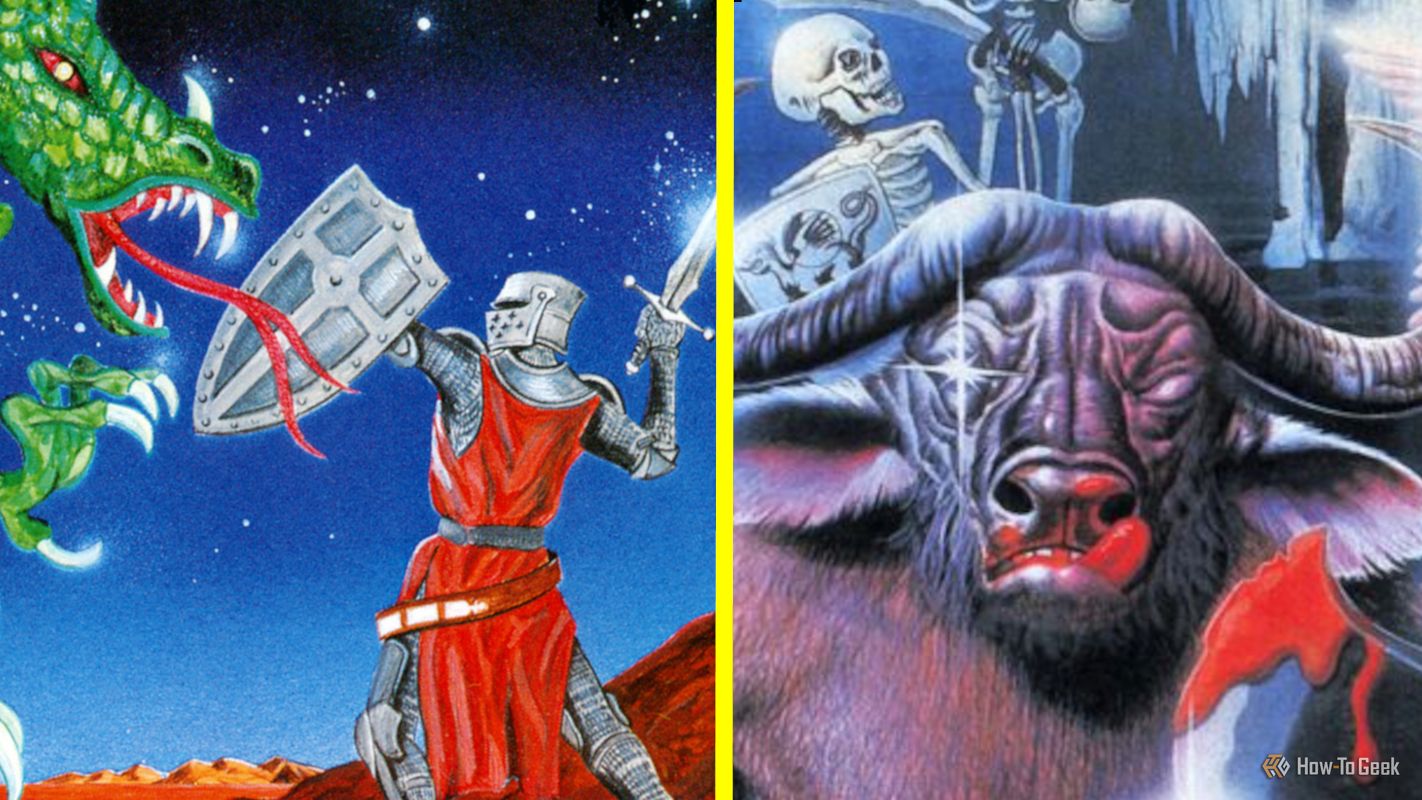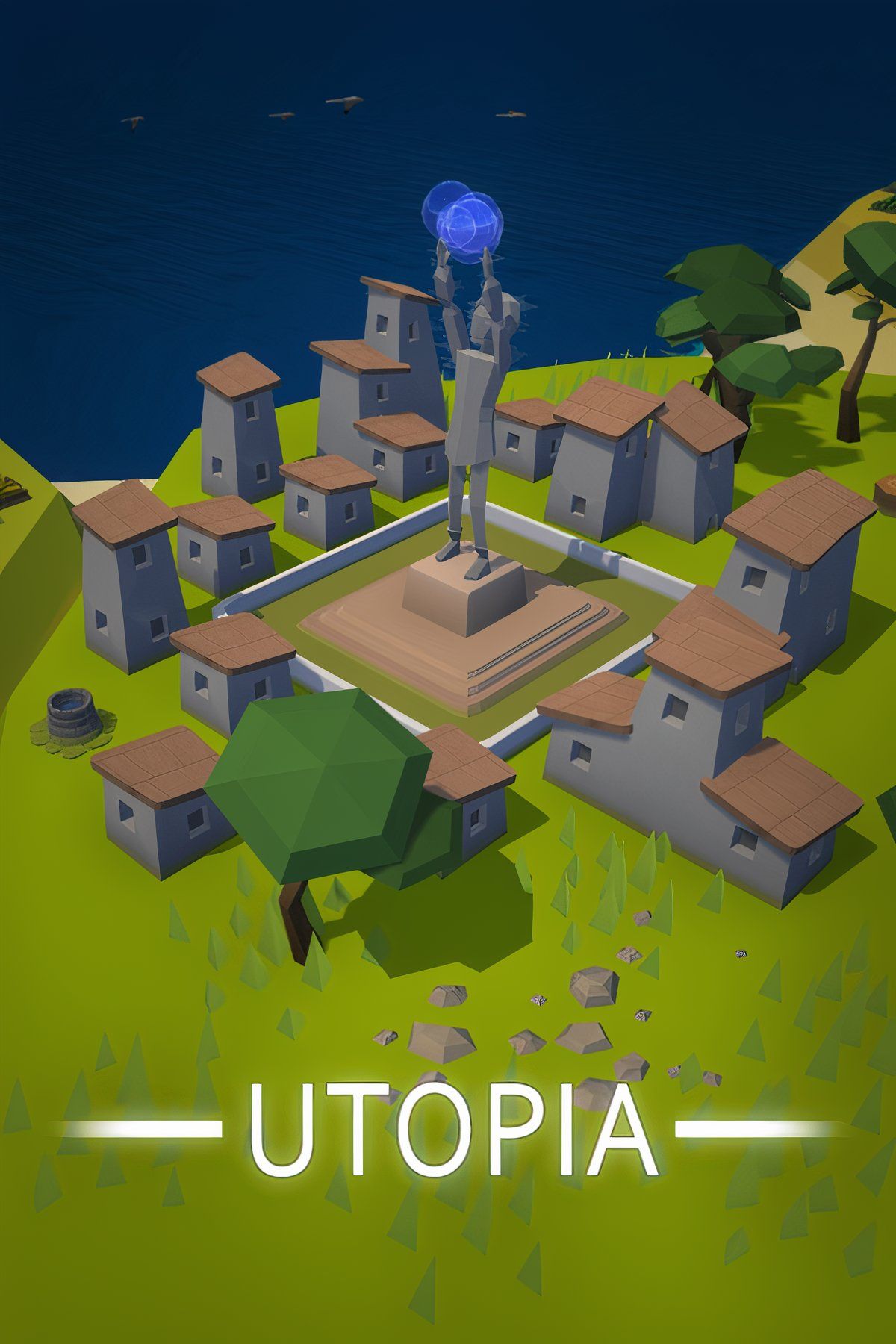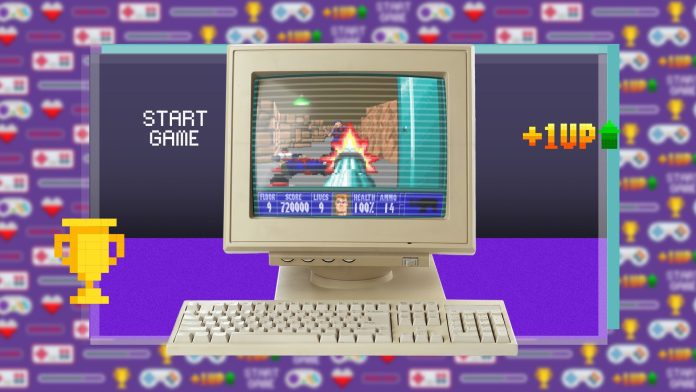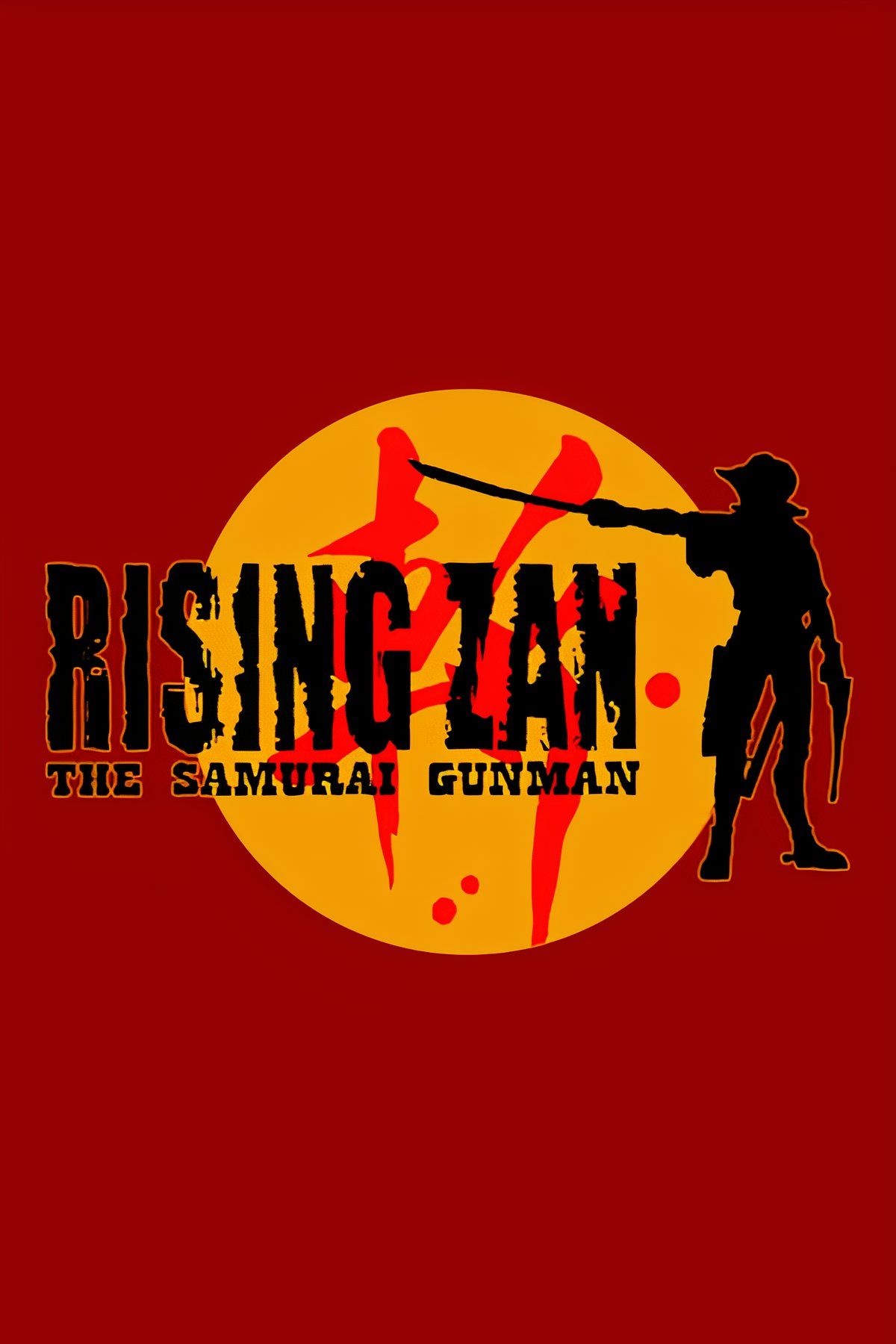
Sign in to your How-To Geek account
Compared to most other forms of entertainment, video games haven’t been around for long. Despite this, almost every gaming genre has dramatically changed since its inception, which makes it easy to forget where they all began.
Whether you prefer explosive action-packed experiences or complex strategy games, most of your favorite gaming genres can be traced back to obscure origins—many of which you’ve probably never heard of.

10 Maze War (1973) – First-Person Shooters
Although Wolfenstein 3D and Doom deserve credit for popularizing the FPS genre, they weren’t the first games to feature first-person action. Before id Software released its flagship shooters, the FPS genre had already been established a few decades earlier. In 1973, a group of high school students studying at the NASA Ames Research Center developed Maze War (also known as Maze), a competitive FPS game in which players battle each other inside a grid-based maze to be the first to achieve a set number of kills.
Despite being the first of its kind, Maze War introduced numerous features that we’ve come to expect from modern FPS games. Over the course of multiple updated iterations, Maze War added mini-maps, corner peaking, in-game text chat, computer-controlled opponents, and level editor tools. By 1974, the game was even capable of hosting multiplayer matches for up to eight players through the early computer network ARPANET.
Maze War
- Released
- 1973
- ESRB
- t
- Multiplayer
- Local Multiplayer
9 Power Drift (1988) – Kart Racers
Sega does what Nintendon’t, and that includes creating the kart racing genre. Before Nintendo established itself as the king of kart racing with Super Mario Kart in 1992, Sega released Power Drift, an arcade kart racer best known for its breakneck speeds and exciting tracks that featured plenty of verticality. Every course will have you speeding up hills, launching off ramps, and drifting around narrow cliffsides. Adding to the thrill of each track’s constant climbs and sudden drops, the game’s original arcade cabinet used a hydraulic platform to shake your seat alongside the movements of your kart.
Power Drift was a powerful start for kart racers, but it’s not hard to see why Mario Kart still took the lead. Whereas Power Drift played like a standard arcade racing game, Super Mario Kart cemented kart racers as a class of their own by introducing the chaos of item boxes, boost pads, and stage hazards. Plus, there’s no doubt that Nintendo’s decision to make its mustachioed mascot the star of its kart racer caught the eyes of many early Nintendo fans, while a certain blue hedgehog wouldn’t make his debut until a few years after Power Drift. However, that hasn’t stopped Sega from staying competitive in the kart racing genre, with Sonic Racing: Crossworlds launching later this year.
8 Rising Zan: The Samurai Gunman (1999) – Character Action Games
Character action games are one of my all-time favorite genres, so Rising Zan: The Samurai Gunman holds a special place in my heart. If you’re unfamiliar with character action games, they’re a sub-genre of action games that revolve around complex, combo-based combat with an emphasis on stylish moves and high-skill ceilings. While most fans would argue that the genre started in 2001 with Devil May Cry, many elements that define modern character action games first appeared in Rising Zan.
Set in the American wild west, Rising Zan has you stepping into the cowboy boots of the titular Zan, a gun-and-sword-slinging ex-sheriff who sets out on a quest for vengeance against the samurai who defeated him in a duel years earlier. Like many other character action games, each stage has you shooting, slashing, and styling on foes, many of which end with a challenging boss fight. Rising Zan also introduced numerous iconic staples of the character action genre, including a Devil Trigger-like special meter that gradually fills up as you defeat enemies, which can be used to perform special moves or activate “Hustle Mode”—a powered-up form that briefly gives Zan a larger sword, increased speed, and a drastic damage boost. The game even features a ranking system similar to the “style meter” popularized by Devil May Cry, though these ranks are only shown at the end of each level.
Admittedly, Rising Zan is a very rough first attempt at creating a character action game. Combat doesn’t have the same air-juggling thrills as its successors, and its limitations are only further worsened by the stiff controls and frustrating camera. However, just like many of the games it inspired, Rising Zan boasts a combat system with tons of hidden depth and a story chock-full of self-aware silliness. It’s a flawed gem, for sure, but it’s still a great start to an often-underrated genre.
7 Blockade (1976) – Snake Games
There’s a good chance you’ve played at least one variant of Snake. The classic game and its countless clones have appeared on every platform imaginable, with the mobile Nokia version being one of its most recognizable ports. However, despite being the namesake of its own genre, the original Snake is just one of many knockoffs of the lesser-known Blockade.
Only ever released in arcades in 1976, Blockade differs slightly from the games it inspired, but nearly all the defining traits of Snake and its clones can be traced back to this obscure arcade game. Unlike most versions of Snake, Blockade is a two-player game in which you and your opponent attempt to trap each other by constructing a trail of interconnecting walls to obstruct the other player. Whichever player collides with a wall loses, and the game repeats until one player reaches a set number of wins. Although Blockade didn’t see much success in arcades, the game spawned countless imitators that tweaked its basic formula and paved the way for the long-lasting popularity of Snake.
6 The Dragon & Princess (1982) and Dungeon (1983) – Japanese Role-Playing Games

It’s no secret that many of the earliest RPGs took heavy inspiration from tabletop role-playing games (TTRPGs)—especially Dungeons & Dragons—but this influence indirectly shaped a cultural divide between the genre’s eastern and western game releases. Western-developed RPGs such as Ultima and The Elder Scrolls emphasized the world-building and player-choice of TTRPGs, while eastern-developed series (most of which are from Japan) like Dragon Quest and Megami Tensei typically focused on delivering engaging battle systems and presenting linear stories with established characters. Because of this, Japanese role-playing games (JRPGs) became a distinct genre of their own, but that has raised questions about when the genre was properly established.
The very first RPG developed in Japan was The Dragon & Princess, released for PC-88 systems in 1982 and developed by Koei (now known as Koei-Tecmo). While The Dragon & Princess features some recognizable JRPG hallmarks such as random encounters, a preset party, and an obnoxious amount of forced level-grinding, most of the game plays out like a text-adventure. Navigating the map, talking to characters, or buying equipment from shops are all managed through text prompts. The only time you’re given direct control of your party is during the game’s very basic turn-based battles.
The standard JRPG formula didn’t start taking shape until the following year, when Koei released another RPG simply titled Dungeon. Koei’s Dungeon isn’t an exact template for later JRPGs, as it borrows many of its ideas and mechanics from the Ultima series. However, Dungeon was the first JRPG to feature a proper overworld map, dungeon-crawling, lively towns with unique NPCs, individual quests, and the ability to manually allocate experience points to specific stats. Dungeon brought far more depth to character-progression and combat than The Dragon & Princess or any other Japanese RPGs that preceded it, and its complexity set a precedent for nearly all future JRPGs.
5 AX-2: Uchū Yusōsen Nostromo (1981) – Survival Horror
Resident Evil may have introduced most players to the terrors of survival horror games, but the genre has a long-winded history that dates back to the early eighties. Alone in the Dark from 1992 is often credited as one of the earliest survival horror games, but it was preceded by 1989’s Sweet Home—a Famicom adaptation of the eponymous 1982 horror movie. Even earlier than that was Atari’s Haunted House, coincidentally released the same year as Sweet Home (the movie), though there’s been plenty of debate over whether it counts as a true horror game. However, none of these iconic games truly “invented” the genre. That honor goes to the little-known AX-2: Uchū Yusōsen Nostromo—which loosely translates to Space Freighter Nostromo.
Partially inspired by the 1979 horror film Alien (you may have already caught the reference in the title), AX-2 traps you in an abandoned spaceship where a murderous alien is actively searching for you. To escape, you’ll need to gather a list of supplies scattered around the ship’s storage rooms, all while avoiding the alien prowling its halls. However, you can only hold five items at a time, forcing you to regularly drop off resources at the escape hatch before returning to the alien’s hunting grounds to collect more supplies. As if that wasn’t challenging enough, the alien can’t be seen until it’s standing in front of you. Even with AX-2‘s simplistic visuals, that persistent fear of being hunted by an invisible entity elevates the game into a surprisingly terrifying experience.
4 Utopia (1981) – Real-Time Strategy Games
Although Utopia can be considered the starting point for the real-time strategy (RTS) genre, there are still very few games like it—even within the field it invented. Originally released exclusively for the Intellivision in 1981, Utopia places you in control of a small island nation and tasks you with developing it into a thriving civilization. You will need to build farms and factories to produce food, construct housing to grow the population, and use a variety of other buildings to fulfill the island’s various needs. You can also go fishing by manually steering a fishing boat around the map, giving you a more active way to gather food and gold for your island.
In many ways, Utopia shares more in common with city-builders like SimCity than most of the RTS games it inspired, but there’s one element that brings it in line with later strategy games. While you’re slowly developing your island into a prosperous nation, you’re also competing against a second player as they build up their own island. Utopia takes place over a set number of rounds, and the winner is determined by whichever player earns a higher score by maintaining a happier and more profitable island throughout the match.
Not only are you working to improve your island, but you can spend resources to spark rebellions on your opponent’s island or build forts to defend your own. While you won’t find as much base-building and military strategizing as you would in later RTS games like Warcraft and Command & Conquer, Utopia still played a vital role in shaping the genre.

Utopia
- Released
- 1982
- ESRB
- N/A
- Developer(s)
- Mattel Electronics
- Publisher(s)
- Mattel Electronics
- Engine
- Utopia engine
- Multiplayer
- Local Multiplayer
3 The Sumerian Game (1964) – City Builders
In 1964, acclaimed computer-manufacturer IBM partnered with New York State’s Board of Cooperative Educational Service (BOCES) to determine whether computers and computer games could be used as educational tools—unsurprisingly, it turned out they could. For the study, IBM and BROCES brought in local teachers to help design computer games based on different academic subjects, which students would play before being quizzed on the subject matter. One of these games was The Sumerian Game, a historical city-management simulator designed by fourth-grade teacher Mable Addis and programmed by IBM’s William McKay.
The Sumerian Game has you ruling over the ancient city-state of Lagash. As Lagash’s leader, you are tasked with managing the city across multiple generations, each separated into thirty rounds. In the game’s first phase, you are tasked with ensuring the citizens receive enough food to remain happy and healthy, while also producing food in farms and food storages to survive future rounds. Later parts of the game introduce additional responsibilities, including managing the city’s workers and handling trade with other territories.
Despite only being used twice for the IBM and BOCES’s study, word about The Sumerian Game spread among game developers, leading to the release of unofficial imitators such as King of Sumeria and Hamurabi. None of these knockoffs were perfect recreations of The Sumerian Game, often missing features from the later stages of the original version. Still, they were the only way for the average player to experience the historical city-builder and left a strong enough impression to spark an entire genre. Although the original game is lost media, historian Andrea Contato created a free remake of The Sumerian Game based on the original’s documentation, allowing us to finally revisit the game that laid the groundwork for all of our favorite city-builders.
2 Island of Kesmai (1985) – MMORPGs
Before MMORPGs like World of Warcraft and Final Fantasy XIV stole thousands of hours from our lives, multi-user dungeon (MUD) games were bringing players together online, one hourly surcharge at a time. For those unfamiliar with the genre, MUDs were text-based precursors to MMOs. Much like later online RPGs, players create a custom avatar, explore a virtual world, and fight alongside other users in turn-based battles. Island of Kesmai wasn’t the first game in the genre, but it marked the start of online gaming’s transition from MUDs to MMOs.
Compared to other MUDs of its time, Island of Kesmai was an enormous game, both in the size of its world and the sheer breadth of content on offer. Players could wander around the game’s multiple distinct regions to find thousands of unique locales, creatures, and NPCs. Whereas other MUDs usually supported player numbers in the double digits, Island of Kesmai was able to support up to 100 players at a time. It was the first game to put the “massive” in MMORPG. Most importantly, Island of Kesmai introduced quests into online games, encouraging players to work together and inadvertently changing the way future online RPGs would be designed. While more famous titles like Ultima Online, Meridian 59, and Everquest were some of the earliest games to officially receive the MMO label, Island of Kesmai was the first game to truly define the genre.
1 Beneath Apple Manor (1978) – Roguelikes
Most roguelikes fans assume that the genre began in 1980 with the fantasy dungeon-crawler Rogue—it is the genre’s namesake after all. However, while Rogue may have popularized randomized levels and punishing permadeath mechanics, many of its innovative ideas debuted two years earlier in an obscure dungeon-crawler titled Beneath Apple Manor.
If you’re familiar with Rogue, you might already know what to expect from Beneath Apple Manor. You take on the role of an adventurer exploring a magic-infused labyrinth hidden underneath the titular Apple Manor, with your goal being to reach the bottom and acquire a mystical golden apple. As you would expect from a roguelike dungeon crawler, Beneath Apple Manor is divided into multiple procedurally generated floors, and dying at any point usually means your character is gone for good, forcing you to restart from the very beginning. However, Beneath Apple Manor is slightly more forgiving than some of its successors, as you can purchase a “brain scan” to resurrect on a prior floor—that is, if you’re willing to lose all your gold and suffer permanently lowered stats.
You could argue that the roguelike genre is even older than Beneath Apple Manor. Earlier games developed for mainframe computers also featured procedurally generated levels and permadeath, with some of the earliest examples being an unlicensed Star Trek game from 1971 and pedit5 from 1975. However, the roguelike features in these titles were often a result of memory limitations that prevented games from including pre-designed levels or saving player data.
Beneath Apple Manor was not only the first roguelike released for home computers, it was also the first game in which these mechanics were a deliberate design choice rather than a technical limitation. Even so, I don’t think anyone wants to start calling the genre “BAM-likes” or “Trek-likes,” so maybe it’s a good thing Rogue got all the credit.
As with anything in life, it takes multiple attempts for any idea to be perfected. These games were ahead of their time, introducing groundbreaking ideas and creating brand-new genres in the process, but it was the games they inspired that refined their rough foundations. Even so, it’s worth giving proper credit to the games that pioneered our favorite genres.


